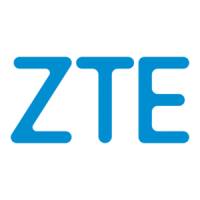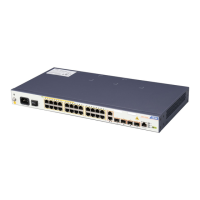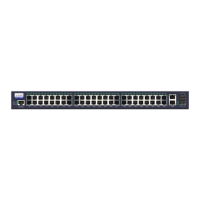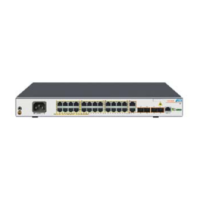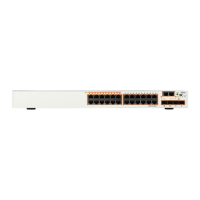ZXR10 2920/2928/2952
(V1.0) Access Switch User Manual (Volume I)
180 Confidential and Proprietary Information of ZTE CORPORATION
zte(cfg)#set vlan 10 enable
zte(cfg)#set vlan 10 add port 1, 24
zte(cfg)#set port 1, 24 pvid 10
zte(cfg)#set qinq customer port 1 enable
zte(cfg)#set qinq uplink port 24 enable
Configuration of switch B is same as that of switch A.
SQinQ Overview
SQinQ (Selective QinQ) is based on QinQ technology. Selective
QinQ configuration enables packets to be tagged with external
tags according to tag they already carry.
SQinQ uses same terms as QinQ to describe its features:
Customer port: port connected to Client Network;
Uplink port: port connected to Service Provider Network
PE (Provider Edge): accessing equipment at the edge of
Service Provider Network.
Client Network is accessed to PE via Trunk VLAN.
Uplink Ports inside Service Provider Network are connected
via Trunk VLAN symmetrically.
By matching specific ACL traffic rules in ports, SQinQ
functions can set different Service Provider’s VLAN tags for
packets.
Packets are transmitted in Service Provider Network. Vlan
Tags of Service Provider would be strip off when packets
leave Service Provider Vlan.
SQinQ configuration is determined as per following conditions:
Normally, a set of Customer Vlans is set in one Uplink Port.
Several sets of Customer Vlans can be in one Uplink Port when it
is confirmed that all Vlans in this port are different with each
other. Configuration of SQinQ in Customer Port only makes
sense for packets which carrying 802. 1Q tag and for
designated Customer Vlan. As to the Customer Vlan which
carries 802. 1P tag or untag, they are all handled as normal
Vlan.
Note: SQinQ would not work in good condition when QinQ is
already configured. Reason is that port could not recognize
Customer Vlan Tag any more when QinQ is configured on this
port. Consequently, SQinQ would not get any Customer Vlan
information.
SQinQ does not support binding with Trunk directly so far.
However, binding with Trunk could be supported indirectly:
adding ports bound with the function of SQinQ to a Trunk in
which ports must belong to same SQinQ Session.
Customer Port
Strategy
Configuration
